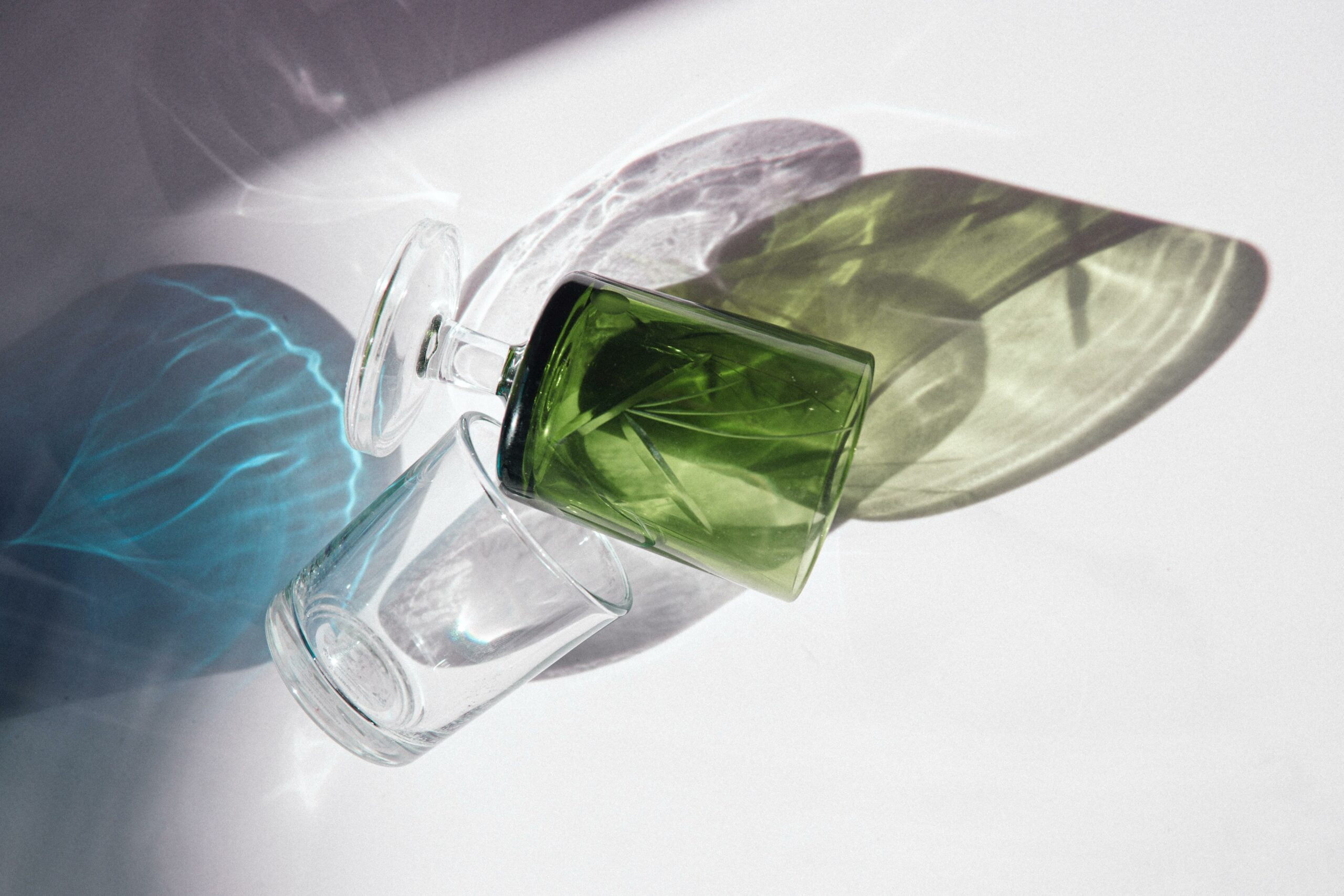Get ready to embark on a mesmerizing journey through the captivating world of glass. Brace yourself for an exploration of the unknown, as we unearth fascinating insights and fun facts that will leave you spellbound. Did you know that the art of manufacturing glass dates back as far as 3600 BCE? Yes, that’s right! For centuries, humans have been mesmerized by the delicate beauty and practicality of this remarkable material. But here’s where it gets even more intriguing—glass can also be formed naturally through extraordinary events such as lightning strikes, volcanic eruptions, and even the forceful impact of a meteorite. Prepare to have your mind blown as we delve into the wonders and mysteries of glass like never before.

Fun Facts About Glass
Glass is a material that surrounds us in our everyday lives, but have you ever stopped to consider the wonders and mysteries it holds? In this article, we will delve into the captivating world of glass, uncovering fun and fascinating facts that will leave you in awe.
1. Glass is not solid, nor liquid, but an amorphous solid. Unlike traditional solids, glass lacks a well-defined crystal structure. Instead, its atoms are arranged in a disordered manner, giving it a “frozen liquid” appearance. This unique characteristic allows glass to be molded into various shapes and forms, making it a versatile material.
“Imagine glass as a magical substance that straddles the line between solid and liquid, offering limitless possibilities for artistic expression and practical applications.”
2. Glass has been used for thousands of years. The history of glass dates back to ancient times, with evidence of glassmaking in Mesopotamia, Egypt, and Syria. Throughout the centuries, glass has evolved from delicate artifacts to a ubiquitous material found in windows, bottles, and countless other everyday objects.
“Let’s take a journey through time and explore the ancient craft that has shaped civilizations and continues to shape our modern world.”
3. Glass is always on the move, albeit at a snail’s pace. While it may seem stationary, glass is constantly undergoing a slow, continuous flow known as “glass flow.” Although imperceptible to the naked eye, this phenomenon occurs due to the rearrangement of glass molecules over time. So, the glass you’re holding right now is actually in a constant state of subtle movement.
“Did you ever imagine that the glass you sip your favorite drink from is in perpetual motion? It’s time to appreciate the hidden dance happening right before your eyes!”
4. Glass is virtually eternal. Unlike many other materials, glass doesn’t decompose easily. In fact, it can take up to one million years for glass to break down naturally. So, that glass bottle you just recycled could potentially outlast countless generations to come.
“Next time you toss an old glass jar into the recycling bin, remember that you’re contributing to the cycle of eternity. Glass has the power to transcend time.”
5. Glass can be reincarnated endlessly through recycling. One of the most remarkable qualities of glass is its ability to be recycled indefinitely without losing its quality. Every time you recycle glass, it gets a new lease on life as it transforms into new bottles, vases, or even beautiful artworks.
“Witness the magical transformation of glass as it transcends its previous form and embraces a new beginning. Recycling is its ticket to immortality.”
6. Glass can be as sturdy as a fortress or as delicate as a feather. The strength of glass varies depending on its composition and manufacturing process. While some glass types can withstand tremendous pressure or extreme temperatures, others are intentionally designed to be delicate and fragile. This duality makes glass a material of paradoxical beauty and intrigue.
“Discover the delicate balance between fragility and resilience that glass possesses. It’s as though glass itself holds the secrets of Yin and Yang in its translucent embrace.”
7. Glass can bounce higher than rubber. Yes, you read that correctly! A solid ball of glass has the potential to bounce higher than a ball made of rubber. The resilient properties of glass, combined with its unique molecular structure, lead to astonishing feats of elasticity.
“Prepare to be amazed as glass defies expectations and showcases a hidden talent that will make you question the limits of physics.”
8. The glass industry is a billion-dollar powerhouse. From glass containers to windows and beyond, the glass industry is a global force to be reckoned with. Valued at a staggering US$5.5 billion dollars, it fuels economies and provides employment for countless individuals worldwide.
“Take a peek behind the scenes of the glass industry and uncover the economic impact of this mesmerizing material. It’s a world where creativity meets commerce.”
9. Glass vividly reflects history and culture. Throughout the ages, glass has been intertwined with human civilization, serving as a canvas for artistic expression and a mirror of cultural shifts. From stained glass windows to intricately crafted glass jewelry, each piece tells a story of its time and the people who shaped it.
“Capture a glimpse of history and culture through the captivating lens of glass. It’s an art form that has preserved memories and shaped identities.”
10. Glass holds secrets waiting to be unlocked. Beneath its transparent facade, glass conceals a multitude of mysteries and marvels. From its mesmerizing ability to form during lightning strikes to its use in creating sharp-edged weapons, the secrets of glass are as diverse as its applications.
“Prepare to embark on a quest of discovery as we unveil the hidden secrets that lie within the glass, waiting for intrepid souls to unearth.”
In conclusion, the world of glass is a treasure trove of surprises and enchantments. From its humble origins in ancient civilizations to its modern-day ubiquity, glass continues to captivate our imaginations. So, the next time you gaze through a window or raise a glass, take a moment to appreciate the wonders and fun facts that underlie this extraordinary material. Glass truly is a window into the marvels of science and a testament to human ingenuity and creativity.
Fun Facts about Glass:
Glass is a fascinating material that has a rich history and many intriguing properties. Did you know that there is a unique species of squid called the glass squid? These amazing creatures have transparent bodies that allow them to blend seamlessly into their surroundings. If you’re curious to learn more about these mesmerizing creatures, check out our article on fun facts about glass squid. Or perhaps you’re interested in exploring the stunning glass beaches of California. These shorelines are covered in colorful sea glass that has been naturally smoothed by the tides. Discover more about this captivating phenomenon in our article on fun facts about glass beach California. Glass blowing is another incredible art form that has been practiced for centuries. If you’re curious about the intricate process of shaping molten glass into breathtaking creations, make sure to read about fun facts about glass blowing. Glass onion may sound like a peculiar term, but it actually refers to a type of onion-shaped glass ornament that was popular in the Victorian era. Learn more about these whimsical decorations in our article on fun facts about glass onion. Glass sponges are yet another fascinating aspect of the glass world. These unique marine organisms form intricate structures made entirely of glass. Delve into the wonders of glass sponges by exploring our article on fun facts about glass sponges. Lastly, have you ever heard of the glass octopus? This elusive creature, found deep in the ocean, is named for its translucent body. Discover more about its mysterious nature in our article on fun facts about glass octopus. With so many amazing aspects of glass to explore, there’s no limit to the wonders you’ll discover. So click on each link above and dive into the captivating world of glass!
11. People Have Been Manufacturing Glass Since 3600 BCE.
Glass, that shimmering and versatile material we encounter in our daily lives, has a captivating history that spans thousands of years. From its humble beginnings in ancient civilizations to its modern-day applications, glass has continually dazzled us with its unique properties and endless possibilities.
Imagine, if you will, the ancient craftsmen of Egypt, Syria, and Mesopotamia, toiling away in their workshops over 5,600 years ago. These ingenious individuals were the pioneers of glassmaking, laying the foundation for a remarkable journey of discovery and innovation.
In those ancient times, glass was a luxury item reserved for the elite. Pharaohs of ancient Egypt adorned themselves with exquisite glass jewelry, flaunting their wealth and power to the world. But the craft of glassmaking was not limited to the realm of fashion and beauty.
Glass, with its remarkable ability to be both utilitarian and decorative, found its way into various aspects of ancient life. It was used for practical purposes such as containers and vessels, with intricate designs adorning their surfaces. It became a canvas for artistic expression, a mirror reflecting the cultural shifts of these civilizations. Glass was not merely an object, but a testament to human creativity and ingenuity.
But how did these ancient artisans manipulate the raw materials to transform them into this mesmerizing substance we now know as glass? The exact origins of the craft are still shrouded in mystery, with debates surrounding whether it originated in coastal north Syria, Mesopotamia, or Egypt. What we do know is that the technology and techniques used in glassmaking have evolved over time, leading to incredible advancements in the industry.
It is fascinating to think about the very first glass objects ever created. The earliest known glass artifacts, dating back to the mid-2000 BCE, were delicate and intricately crafted beads. These captivating ornaments offer a glimpse into the early days of glassmaking and serve as a testament to the creativity and skill of our ancient ancestors.
As the centuries passed, the art of glassmaking spread across the globe. By the first century BCE, the global glass industry was well-established, with craftsmen honing their skills and expanding their repertoire. Glass became an integral part of daily life, serving as windows to the world, vessels for liquids, and instruments for scientific exploration.
Did you know that the color of glass can be altered by adding minerals or electrically charged ions? It’s true! These additives can transform the optical properties of glass, giving it a kaleidoscope of hues. From transparent to opaque, from vibrant to subtle, glass has the ability to captivate our senses and evoke a myriad of emotions.
Glass, with its enduring and timeless nature, continues to hold a prominent place in our modern society. Its strength varies depending on its composition and manufacturing process, making it suitable for a range of applications. Glass can be found in the windows that allow sunlight to fill our homes, in the screens of our smartphones that connect us to the world, and in the intricate medical instruments that save lives.
The history of glassmaking is a complex tapestry woven with threads of culture, technology, and artistic expression. It reflects the ingenuity and curiosity of humanity, as well as our unyielding desire to push the boundaries of what is possible. Glass is not just a material; it is a witness to our progress and a testament to our quest for knowledge.
So, the next time you gaze through a window or hold a delicate glass ornament in your hands, take a moment to appreciate the wonders of this captivating material. From the ancient artisans to the modern manufacturers, the journey of glass has been one of continuous discovery, innovation, and sheer brilliance.
“The craft of glassmaking dates back to ancient civilizations, where it was valued as a symbol of wealth and power while also serving practical and decorative purposes.”
“The technology and techniques used in glassmaking have evolved over time, leading to advancements in the industry and the diverse applications of glass in our modern lives.”
“Glass reflects the ingenuity and creativity of humanity, showcasing our ability to transform raw materials into mesmerizing works of art and functional objects.”
Glass Can Be Formed by Nature’s Incredible Forces
Glass is not just a product of human ingenuity; it can also be created by the awe-inspiring forces of nature. Natural phenomena like lightning, volcanic eruptions, and even the impact of a meteorite have the power to give birth to this remarkable material. How does this happen, you ask? Let’s delve into the fascinating world of glass formation through these extraordinary events.
Nature loves to put on a show, and one of its most captivating displays is a volcanic eruption. When a volcano erupts, it spews out molten rock known as lava. This superheated lava is rich in silica, the main compound of glass. As the lava cools rapidly upon contact with the air or water, it solidifies into what we call volcanic glass, or obsidian. Imagine witnessing the fiery symphony of a volcano and knowing that it can create such a unique and beautiful substance.
Lightning, one of nature’s most powerful and electrifying phenomena, also has a role to play in the creation of glass. When a bolt of lightning strikes desert or beach sands, it generates an intense amount of heat around 30,000 Kelvin (or 53,540 degrees Fahrenheit), which is hotter than the surface of the sun. This extreme heat melts the sand, transforming it into glass. It’s like witnessing nature’s own alchemy, turning ordinary sand into something extraordinary.
If you thought volcanic eruptions and lightning strikes were impressive, wait until you hear about the impact of a meteorite. When these celestial bodies collide with the Earth’s surface, the sheer force and energy generated create intense heat and pressure. This combination can produce temperatures high enough to melt rocks and form glass. Just picture the incredible cosmic dance between a meteorite hurtling through the atmosphere and the formation of glass upon impact. It’s like a collision of wonders from the heavens, shaping our planet in extraordinary ways.
The beauty of glass lies not only in its diverse applications and artistic expressions but also in its ability to be formed naturally through the forces of nature. From the fiery depths of volcanic eruptions to the electrifying power of lightning and the celestial impact of meteorites, glass emerges as a testament to the incredible phenomena that shape our world. So, the next time you marvel at a piece of glass, remember the extraordinary journey it took from the heart of nature’s wonders to your everyday life.
“Nature’s forces create glass in ways we can hardly comprehend. From molten lava to electrifying lightning and cosmic collisions, glass captures the extraordinary power of our planet and the vastness of the universe.”
Glass Packaging: Fun Facts You Didn’t Know
[youtube v=”YQNIFH-Bb0o”]
Glass has been a popular storage solution for centuries, offering a wide range of designs, shapes, and colors that captivate our attention. But did you know that glass holds many exciting and unknown facts? Let’s explore some of the most intriguing aspects of this versatile material.
Ancient Origins and Endless Recycling
Glass has been used by mankind for over 5,000 years, with ancient civilizations harnessing its beauty and functionality. From containers to decorative pieces, glass has always been a symbol of luxury and refinement. But what makes glass truly remarkable is its ability to be endlessly recycled without losing its quality. Unlike many other materials, glass can be transformed and repurposed time and time again, making it an environmentally-friendly choice.
Glass is one of the few materials that can be endlessly recycled without losing its integrity or purity.
Glass: A Unique Solid with Shifting Properties
Most of us think of glass as a solid material, but it’s actually an amorphous solid, straddling the line between solid and liquid. This unique characteristic allows glass to be molded into various shapes, making it highly versatile. Furthermore, glass is in a constant state of flux known as “glass flow.” Over time, the molecules in glass rearrange themselves, slowly altering its structure.
Glass is constantly undergoing a slow, continuous flow called “glass flow” due to the rearrangement of glass molecules over time.
The Incredible Longevity of Glass
Unlike many materials that decompose over time, glass has a remarkable durability. It can take up to one million years for glass to naturally break down. This quality makes glass an ideal packaging option for preserving the freshness of food products and protecting medicines from contamination.
Glass containers are airtight, impermeable, and transparent, which helps preserve the freshness of food products and save medicines from contamination.
Unleashing the Power of Glass
Glass has an astonishing range of applications in our modern society. From windows to smartphones to medical instruments, its versatility knows no bounds. The strength of glass varies depending on its composition and manufacturing process. In fact, glass has the potential to bounce even higher than rubber due to its unique molecular structure.
The strength of glass varies depending on its composition and manufacturing process. It has the potential to bounce higher than rubber due to its unique molecular structure.
Glass: A Reflection of Culture and Art
Throughout history, glass has played a significant role in reflecting human culture and artistic expression. It has been a canvas for showcasing our societal shifts and technological advancements. Glassmaking itself is an art form, with artisans creating intricate designs and patterns. Today, the glass industry is valued at an impressive US$5.5 billion and provides employment opportunities worldwide.
Glass reflects history and culture as a canvas for artistic expression and a mirror of cultural shifts.
Unveiling Mysteries and Marvels of Glass
Glass holds a multitude of fascinating mysteries and marvels. Its formation during lightning strikes, its use in creating weapons, and its ability to capture the imagination. The exact origins of glassmaking are still debated, but it is clear that it evolved over time with advancements in technology and techniques. The earliest known glass artifacts, delicate beads, date back to around 2000 BCE. By the first century BCE, glass had become an integral part of daily life across the globe.
Glass holds a multitude of mysteries and marvels, from its formation during lightning strikes to its use in creating weapons.
Glass: A Product of Nature’s Forces
While glass is often associated with human craftsmanship, it can also occur naturally through powerful natural phenomena. When volcanic lava cools rapidly upon contact with air or water, it forms a type of glass called obsidian. Additionally, lightning strikes can melt desert or beach sands, transforming them into glass. Even meteorite impacts generate such intense heat and pressure that they can melt rocks and create glass upon impact.
Glass can be formed by natural phenomena such as volcanic eruptions, lightning strikes, and meteorite impacts.
In conclusion, glass is not just a material; it is a testament to human ingenuity, the power of nature, and the endless wonders of our world. Its versatility, longevity, and ability to reflect our culture and history make it truly remarkable. So, the next time you look at a piece of glass, remember the incredible journey it has taken to become a part of our daily lives.
Glass captures the extraordinary power of our planet and the vastness of the universe.
FAQ
Question 1: When did humans start manufacturing glass?
Answer 1: Humans have been manufacturing glass since 3600 BCE in places like Egypt, Syria, and Mesopotamia. (Source: Context: 1)
Question 2: How is glass formed naturally?
Answer 2: Glass can be formed through natural phenomena such as lightning strikes, volcanic eruptions, and the impact of a meteorite. (Source: Context: 11)
Question 3: What is the main compound of glass?
Answer 3: The main compound of glass is silica (SiO2), which is the primary constituent of sand. (Source: Context: 4)
Question 4: What are some examples of natural glasses?
Answer 4: Natural glasses include obsidian, fulgarites, and volcanic glasses, which can be found in nature. (Source: Context: 7)
Question 5: How has the history of glass-making evolved?
Answer 5: The history of glass-making is complex and intertwined with the cultural, technological, and artistic developments of different civilizations. Over time, the technology and techniques used in glassmaking have evolved, leading to advancements in the industry. (Source: Context: 14)
- Beyond the Beat: Unveiling Interesting Dance Facts from Around the World - July 26, 2024
- Unlocking Fleet Efficiency: Captivating Facts About FleetFinder - July 26, 2024
- Peel Back the Facts: The Unexpected Wonders of Banana Cleaner - July 26, 2024
















